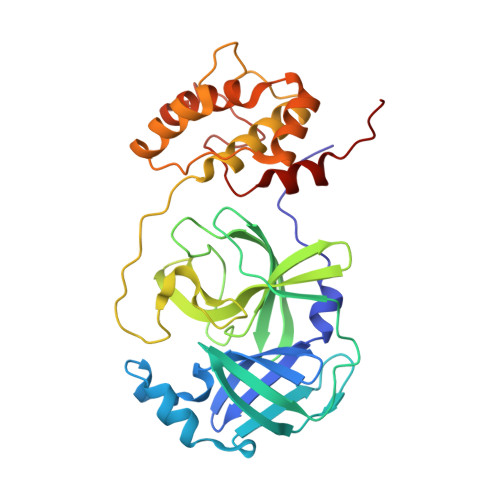Structures of the Middle East respiratory syndrome coronavirus 3C-like protease reveal insights into substrate specificity.
Needle, D., Lountos, G.T., Waugh, D.S.(2015) Acta Crystallogr D Biol Crystallogr 71: 1102-1111
- PubMed: 25945576
- DOI: https://doi.org/10.1107/S1399004715003521
- Primary Citation of Related Structures:
4WMD, 4WME, 4WMF - PubMed Abstract:
Middle East respiratory syndrome coronavirus (MERS-CoV) is a highly pathogenic virus that causes severe respiratory illness accompanied by multi-organ dysfunction, resulting in a case fatality rate of approximately 40%. As found in other coronaviruses, the majority of the positive-stranded RNA MERS-CoV genome is translated into two polyproteins, one created by a ribosomal frameshift, that are cleaved at three sites by a papain-like protease and at 11 sites by a 3C-like protease (3 CL(pro)). Since 3 CL(pro) is essential for viral replication, it is a leading candidate for therapeutic intervention. To accelerate the development of 3 CL(pro) inhibitors, three crystal structures of a catalytically inactive variant (C148A) of the MERS-CoV 3 CL(pro) enzyme were determined. The aim was to co-crystallize the inactive enzyme with a peptide substrate. Fortuitously, however, in two of the structures the C-terminus of one protomer is bound in the active site of a neighboring molecule, providing a snapshot of an enzyme-product complex. In the third structure, two of the three protomers in the asymmetric unit form a homodimer similar to that of SARS-CoV 3 CL(pro); however, the third protomer adopts a radically different conformation that is likely to correspond to a crystallographic monomer, indicative of substantial structural plasticity in the enzyme. The results presented here provide a foundation for the structure-based design of small-molecule inhibitors of the MERS-CoV 3 CL(pro) enzyme.
Organizational Affiliation:
Macromolecular Crystallography Laboratory, Center for Cancer Research, National Cancer Institute at Frederick, Frederick, Maryland, USA.















